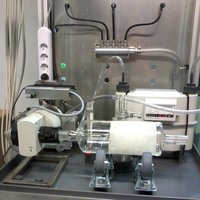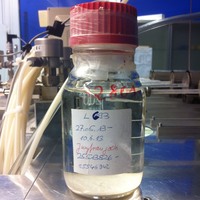ICOS follows a two-pronged radiocarbon sampling strategy.
To track long-term changes in the large-scale European
atmospheric fossil fuel CO2 burden,
two-weekly integrated samples are analyzed.
These measurements are complemented by spot samples that allow
to determine the fossil CO2 content of a specific air mass.
Integrated samples
A large share of the integrated samples is analyzed using gas proportional counters.
These conventional samples require a CO
2 amount,
which is contained in approximately 20 m
3 air.
The atmospheric CO
2 is sampled by chemical absorption
in CO
2-free NaOH solution over the course of two weeks. CO
2 absorption takes place in so called Raschig-tube samplers,
which have been originally developed for atmospheric
14CO
2 sampling in
the 1970s (
Levin et al., 1980).
The samplers have proven very reliable and robust and are also used in the Heidelberg
global
14CO
2 sampling network (
Levin et al., 2010).
The CRL has the capacity of building four to six samplers
per year for the ICOS atmospheric station network at cost-price.
Requests should be made to
Ingeborg Levin ☛.
Low-volume integrated samplers for
14CO
2 analysis by AMS are currently under development.

